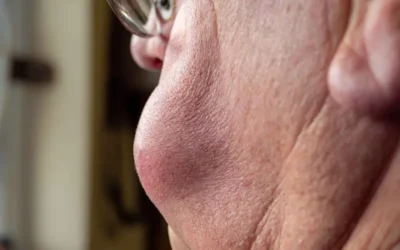As per reports from the Asthma and Allergy Foundation of America (AAFA), each year there are 200,000 hospital visits due to food allergies in the United States (2020 statistics). Anaphylaxis is a life-threatening allergic reaction to certain foods, medications, insect venom or latex. The condition causes the immune system to release a flood of chemicals that can lead to a potentially fatal condition known as “anaphylactic shock”. Apart from diagnosing and treating anaphylaxis, allergy specialists and other physicians must also ensure that the medical coding for the condition is properly done on the medical claims. Outsourcing billing and coding tasks to professional medical billing companies can help physicians submit their medical claims without errors.
Signs and Symptoms of Anaphylaxis
Anaphylaxis can occur in both children and adults. Signs and symptoms usually occur within minutes of exposure to an allergen. In certain other cases, the symptoms can occur half an hour (or longer) after exposure. Common symptoms include – skin reactions (including hives and itching, and flushed or pale skin), facial swelling, low blood pressure, a weak and rapid pulse, wheezing and breathing trouble, constriction of airways and a swollen tongue or throat.
Diagnosis of anaphylaxis involves identifying the source of allergic reactions whether it’s related to particular food items, medications, latex or insect stings. Other allergy tests like skin tests or blood tests may be performed to determine the type and severity of triggers. Treatment for this condition involves an injection of epinephrine, or adrenaline.
ICD-10 Codes to Report Anaphylaxis
Allergy and sleep medicine medical billing and coding can be challenging as there are many medical codes associated with the condition. Healthcare practices can ensure correct and timely medical billing and claims submission by outsourcing these tasks to a reliable provider that provides the services of AAPC–certified coding specialists. ICD-10 diagnosis codes to report anaphylaxis include –
- T78 Adverse effects, not elsewhere classified
- T78.0 Anaphylactic reaction due to food
- T78.00 Anaphylactic reaction due to unspecified food
- T78.00XA …… initial encounter
- T78.00XD …… subsequent encounter
- T78.00XS …… sequela
- T78.01 Anaphylactic reaction due to peanuts
- T78.01XA …… initial encounter
- T78.01XD …… subsequent encounter
- T78.01XS …… sequela
- T78.02 Anaphylactic reaction due to shellfish (crustaceans)
- T78.02XA …… initial encounter
- T78.02XD …… subsequent encounter
- T78.02XS …… sequela
- T78.03 Anaphylactic reaction due to other fish
- T78.03XA …… initial encounter
- T78.03XD …… subsequent encounter
- T78.03XS …… sequela
- T78.04 Anaphylactic reaction due to fruits and vegetables
- T78.04XA …… initial encounter
- T78.04XD …… subsequent encounter
- T78.04XS …… sequela
- T78.05 Anaphylactic reaction due to tree nuts and seeds
- T78.05XA …… initial encounter
- T78.05XD …… subsequent encounter
- T78.05XS …… sequela
- T78.06 Anaphylactic reaction due to food additives
- T78.06XA …… initial encounter
- T78.06XD …… subsequent encounter
- T78.06XS …… sequela
- T78.07 Anaphylactic reaction due to milk and dairy products
- T78.07XA …… initial encounter
- T78.07XD …… subsequent encounter
- T78.07XS …… sequela
- T78.08 Anaphylactic reaction due to eggs
- T78.08XA …… initial encounter
- T78.08XD …… subsequent encounter
- T78.08XS …… sequela
- T78.09 Anaphylactic reaction due to other food products
- T78.09XA …… initial encounter
- T78.09XD …… subsequent encounter
- T78.09XS …… sequela
- T78.1 Other adverse food reactions, not elsewhere classified
- T78.1XXA …… initial encounter
- T78.1XXD …… subsequent encounter
- T78.1XXS …… sequela
- T78.2 Anaphylactic shock, unspecified
- T78.2XXA …… initial encounter
- T78.2XXD …… subsequent encounter
- T78.2XXS …… sequela
Identifying and avoiding allergens that trigger a reaction is an important aspect in anaphylaxis prevention. Common prevention steps include – carrying allergy medications, exercising caution (in the case of a person who is allergic to insect stings), and carefully reading the labels of all the foods before eating, in case of food allergies.



